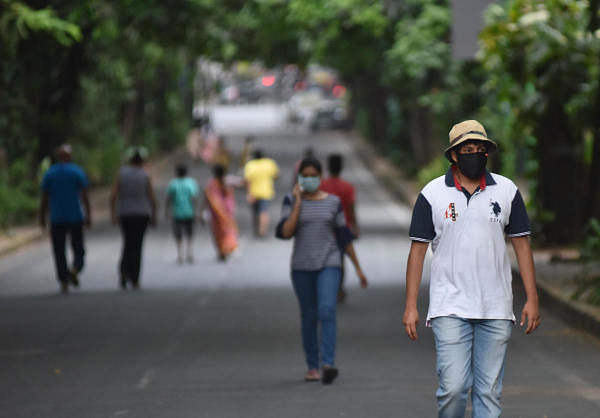
The statewide survey on finding COVID-19 vulnerable population particularly with comorbidities and cases like SARI, ILI has revealed that there are over 53.99 lakh households vulnerable to the infection.
The survey, which is 67.16% complete so far, finds 1.37 lakh households across Karnataka have people with comorbid conditions, excluding a further 13,341 households with symptoms of Influenza Like Illness (ILI), Severe Acute Respiratory Infection (SARI) and Covid-19.
Over 48 lakh households have senior citizens, who on account of their age are at highest risk of death from the disease.
Munish Moudgil, Director of the State COVID War Room, clarified that households could have multiple types of vulnerable people. According to the survey data (which is dated May 26), Kalaburagi and Bengaluru Urban have the highest cases of SARI, ILI with 1,902 households and 1,703 households respectively, although these numbers are likely to rise, as the survey is still incomplete in these districts.
A BBMP source said that 68% of the survey has been completed in the city, but the data has not been logged yet. The number of SARI/ILI cases is next highest in Shivamogga with 1,217 households, Mysuru with 1,200 and Davangere with 1,178.
SARI/ILI as indicators
The government regards SARI and ILI as indicators of coronavirus and on April 17, had passed an order instructing healthcare workers to test people with these conditions for the coronavirus. Consequently, 51 COVID-19 cases were discovered by testing people with these symptoms.
Belagavi, meantime, has reported the highest incidents of households with comorbid conditions with 12,427 identified so far, followed by Mandya with 9,289, Kalaburagi with 8,311, Shivamogga with 8,140 and Bengaluru Urban with 7,562. Importantly, 3,45,443 vulnerable people have been identified in Bengaluru Urban within 28.26% of data logged in so far.
The survey was described by Jawaid Akhtar, Additional Secretary to the Government, Department of Health, as an effort to determine which households are vulnerable so as to give them more support and keep a track of them through Asha workers and midwives.
When asked if it was perhaps too ambitious, Akhtar said that the data collection is being done through the Aptha Mithra app. “This is an effort to identify at-risk households using technology. The survey is a proactive effort. It helps us monitor the situation and offer help if required,”
he added.
Some 50.73 lakh vulnerable households have been earmarked for a follow-up. But the Additional Secretary said that not all the households identified so far will actually require assistance. According to Moudgil, the door-to-door survey will include the entire population of the state and will be done by teachers, staff and booth-level officers.